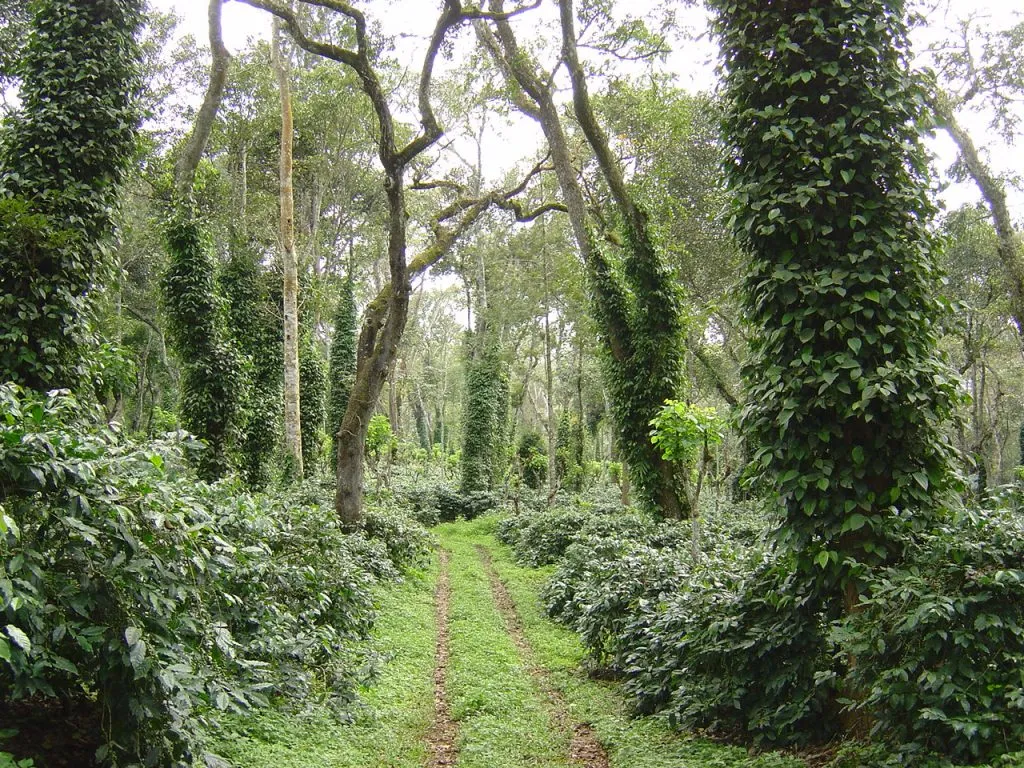by Dr. Anand Titus and Geeta N. Pereira
Drought is a significant challenge for coffee cultivation, affecting yield and quality. Understanding the mechanisms of drought escape, drought tolerance, and drought avoidance in coffee varieties is crucial for developing resilient genotypes that can thrive under water-limited conditions. This comprehensive overview will explore these mechanisms in detail.
Drought Escape
Definition and Mechanism
Drought escape refers to the ability of a plant to complete its life cycle before the onset of drought conditions. This strategy is particularly vital in environments where drought occurs intermittently or at specific times during the growing season. In coffee, this mechanism can be achieved through:
Phenological Flexibility
Coffee plants can adjust their flowering and fruiting times to coincide with periods of adequate soil moisture. Early maturing varieties are particularly advantageous as they can avoid terminal drought stress by completing their growth cycle before water becomes limiting.
Leaf Shedding
Some coffee clones exhibit a sequential shedding of leaves during drought stress, starting from older leaves. This reduces water loss and helps the plant conserve resources.
shorter Growing Seasons
Developing short-duration coffee varieties can minimize yield losses from terminal drought by allowing plants to mature before severe water deficits occur.

Drought Tolerance
Definition and Mechanism
Drought tolerance is defined as the ability of a plant to maintain growth and physiological functions under prolonged water deficit conditions. This mechanism involves various adaptations at morphological, physiological, biochemical, and molecular levels.
Morphological Adaptations
Root System Architecture
Drought-tolerant coffee varieties often have deeper and more extensive root systems, allowing them to access water from deeper soil layers. Increased root biomass, density, and depth are critical traits that contribute to better water uptake during dry periods.
Leaf Area Reduction
To minimize transpiration losses, drought-tolerant genotypes may exhibit reduced leaf area or adaptations such as leaf rolling or curling.
Physiological Adaptations
Stomatal Control
Effective regulation of stomatal opening helps reduce water loss through transpiration. Drought-tolerant coffee plants can maintain higher stomatal conductance under stress conditions compared to sensitive varieties.
Photosynthetic Efficiency
Maintaining photosynthesis during mild drought conditions is crucial for sustaining growth. Drought-tolerant genotypes often show higher photosynthetic rates even when soil moisture is low.
Biochemical Mechanisms
Osmoregulation
Accumulation of osmolytes such as sugars and amino acids helps maintain cell turgor under drought stress. Enzymes involved in carbon metabolism, like sucrose synthase and phosphofructokinase, play essential roles in this process.
Antioxidant Production
Drought stress can lead to oxidative damage; thus, the production of antioxidants helps mitigate this stress by protecting cellular structures from reactive oxygen species.
Molecular Mechanisms
Gene Expression
Specific genes are upregulated in response to drought stress. For instance, the gene CaERF017 in Coffea arabica has been identified as highly expressed under low moisture conditions, indicating its role in drought response.
Genetic Improvement
Understanding these molecular mechanisms allows for targeted breeding programs aimed at enhancing drought tolerance through genetic modification or selective breeding of desirable traits.
Drought Avoidance

Definition and Mechanism
Drought avoidance encompasses strategies that enable plants to minimize water loss and maximize water uptake during dry periods. Key features include:
Stomatal Regulation
By controlling stomatal opening more effectively than less tolerant varieties, coffee plants can maintain higher leaf water potential during drought conditions.
Root Depth and Density
An extensive root system not only enhances water uptake but also allows plants to exploit moisture from deeper soil layers that may remain available longer than surface moisture.
Leaf Characteristics
Traits such as glaucousness (a waxy coating on leaves) help reduce transpiration rates by minimizing water loss through leaf surfaces. This characteristic is associated with improved water use efficiency in various crops, including coffee.
Conclusion
The interplay between drought escape, tolerance, and avoidance mechanisms is vital for the survival and productivity of coffee plants in increasingly arid environments due to climate change. Coffee breeders are focusing on developing new cultivars that incorporate these traits to ensure sustainable production.
By understanding these mechanisms—morphological adaptations like deep roots, physiological responses such as stomatal control, biochemical processes involving osmoregulation, and molecular insights into gene expression—researchers can enhance the resilience of coffee varieties against drought stress. Continued research into these areas will be essential for adapting coffee cultivation practices to meet future challenges posed by climate variability.
References
Anand T Pereira and Geeta N Pereira. 2009. Shade Grown Ecofriendly Indian Coffee. Volume-1.
Alexander M. 1977. Introduction to soil microbiology (2nd ed.). NewYork: John Wiley,
Anand Titus Pereira & Gowda. T.K.S. 1991. Occurrence and distribution of hydrogen dependent chemolithotrophic nitrogen fixing bacteria in the endorhizosphere of wetland rice varieties grown under different Agro climatic Regions of Karnataka. (Eds. Dutta. S. K. and Charles Sloger. U.S.A.) In Biological Nitrogen Fixation Associated with Rice production. Oxford and I.B.H. Publishing. Co. Pvt. Ltd. India.
Toward elucidating the functions of miRNAs in drought stress tolerance
Coffee plants respond to drought
Coping with drought: Lessons learned from robusta coffee growers
Mitigation of the Negative Impact of Warming on the Coffee Crop